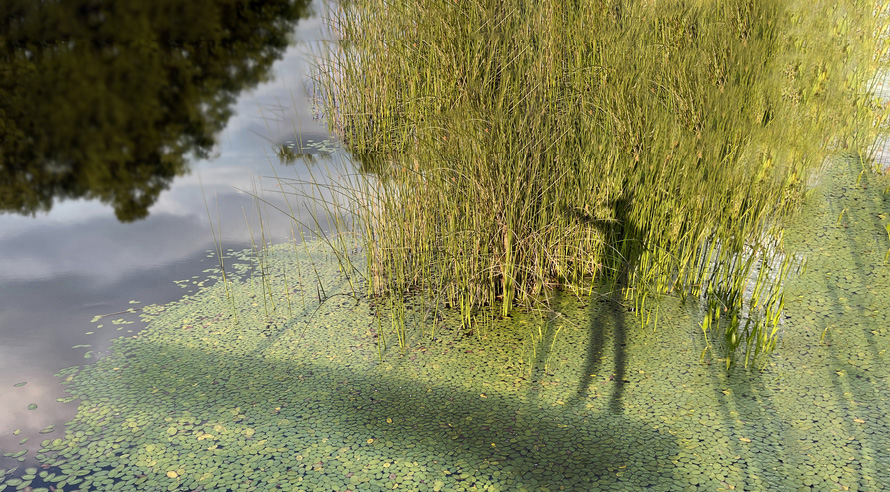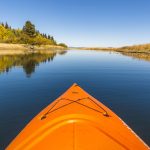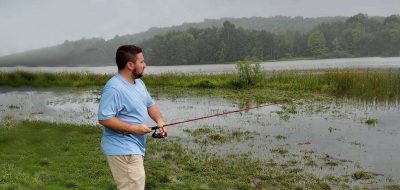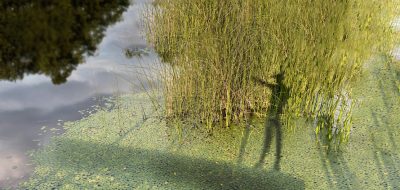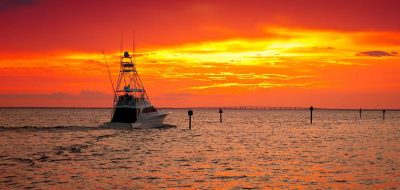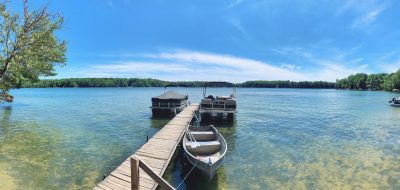One of the things that excite me the most as a bass angler is walking up to a flooded lake loaded with vegetation. As I stare out over the lake, I can’t help but think about all the opportunities for catching bass that lie beneath.
The problem is getting a lure into the water without getting hung up on every cast. Having to dodge lily pads, low-hanging trees and standing timber is a serious challenge for a lot of anglers, but it’s even more challenging when there isn’t a lot of open water.
These are the types of ponds I really enjoy so I’ve spent a lot of time focusing on this type of fishing, what lures to use, how to cast and how to pull the lunkers out of their hiding spots.
Here are some of my biggest tips for finding bass in heavy cover.
Back Off
If you’re fishing from a boat, most people think you need to get right on top of the cover to prevent a miscast and getting hung up on something. This is where perfecting your cast really comes into play.
You want to stay as far away from your target area as possible because you can disturb it. Keep in mind that these are the ponds and lakes that are mostly untouched because they’re too intimidating for a beginner angler.
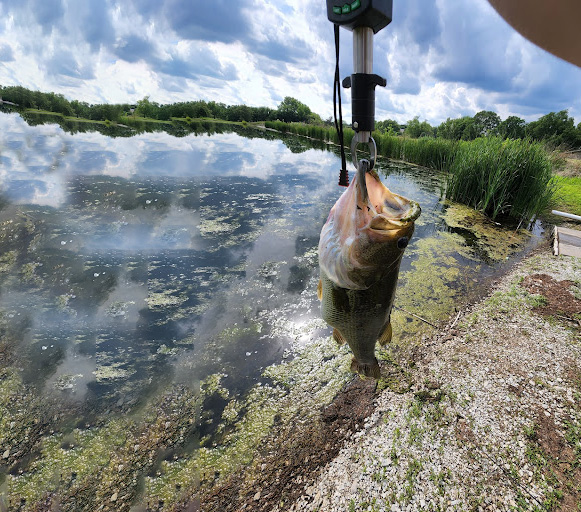
Photo courtesy of Coty Perry.
By keeping your distance, you’re allowing the bass to continue to feel comfortable in their hiding spot, which will increase the chances of them letting their guard down. By hitting the spot at the right time with the proper lure, you have an extremely high chance of getting them to strike.
If you’re having a hard time reaching your ideal spot, throw a small 1⁄8-ounce split shot on the line to add a little weight to your cast. It’s not so heavy that you’re going to drag the bottom but it also adds enough weight to give you a little more length.
Use Scent
If you read any of my articles, you know I’m a huge fan of Berkley Powerbait, Smelly Jelly and anything that adds scent to the bait. I recently started using some of the newer Gulp! Juice swimbaits and have been killing it on heavy vegetation waters throughout Northeast Pennsylvania.
The important thing to keep in mind with scent is that all the same rules apply. You still want to stay a solid distance from your target but you want to get close enough to be able to entice them. The scent might seem strong to us, but it’s actually not that powerful to a bass.
I like to think about it like this: If a bass wants to strike your lure for whatever reason, the scent won’t turn them off, it’s only going to help. But, for it to work, everything else needs to fall in place as well.
The Brighter the Better
On a recent trip to one of my favorite mucky ponds, I was dealing with some particularly difficult conditions. I’ve fished this place quite a few times and frequent the Clayton Park RV Escape there as well.
This lake is well known for being heavily coated in green algae. This creates a great place for the bass to hide and feel comfortable, but it also reduces visibility to almost nothing.
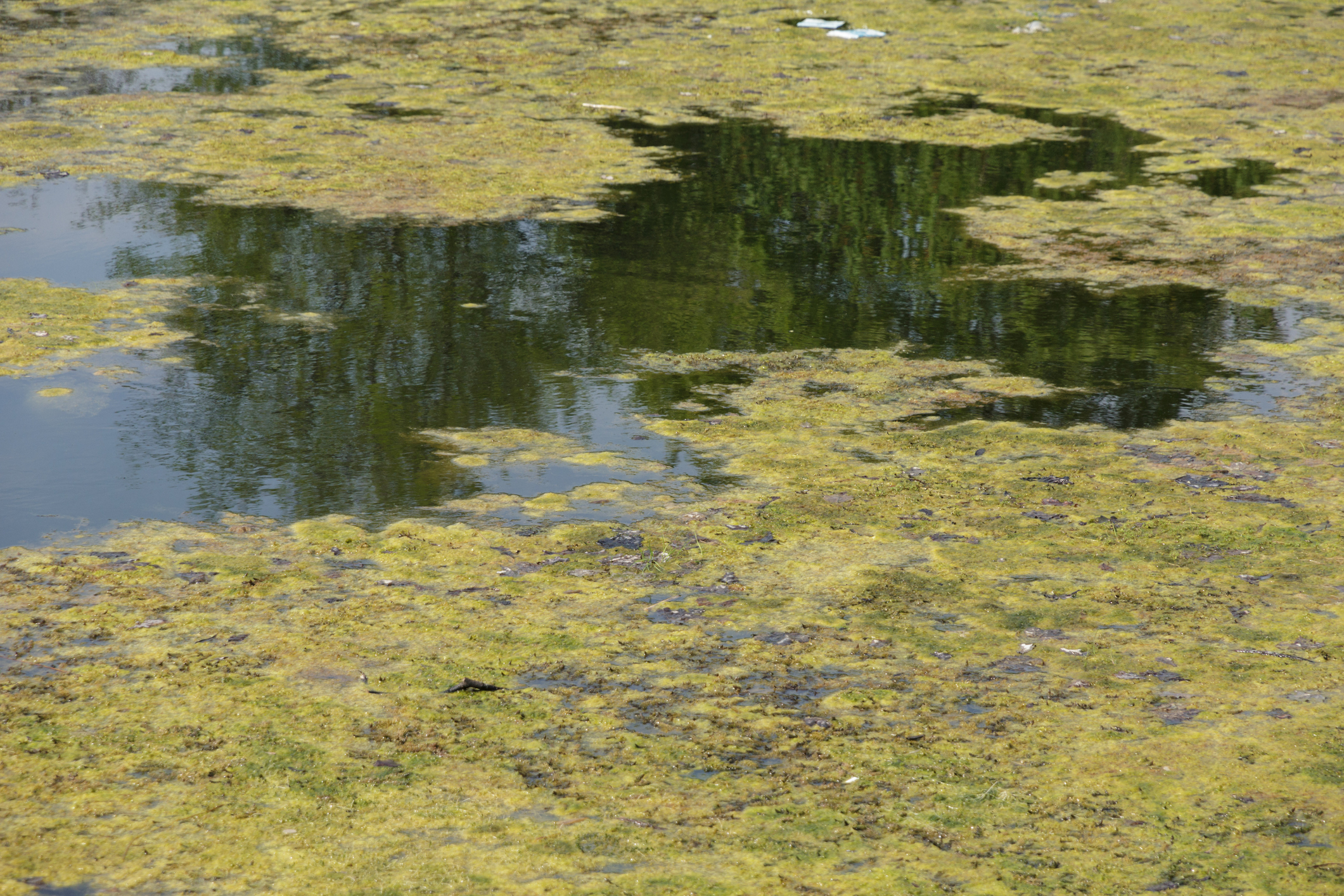
Getty Images
As a result, you need to rely entirely on scent and noise. To help increase your chances of catching something, you can also use color accents that are entirely different from the water you’re fishing.
For example, the Spring through most of the Northeast is known for craw presentations. This is because bass and other freshwater fish typically feed on crawfish during this time so blues, greens and pumpkin colors are most popular.
If you’re fishing the Spring in heavy cover, you’ll want to use a lure that has those colors, but also with a red accent to imitate something dying or hurt. This will make the bass feel that they have an easy meal on their hands and increase your chances of getting a strike.
Go Kayaking
Touring the Eastern part of the country for most of my life has allowed me to fish a lot of amazing places and I’ll tell you one thing, having a kayak is the best way to fish just about anywhere. Whenever I stay at an RV resort or campsite, I always look for other people with fishing kayaks to see where they’re fishing and what they’re catching.
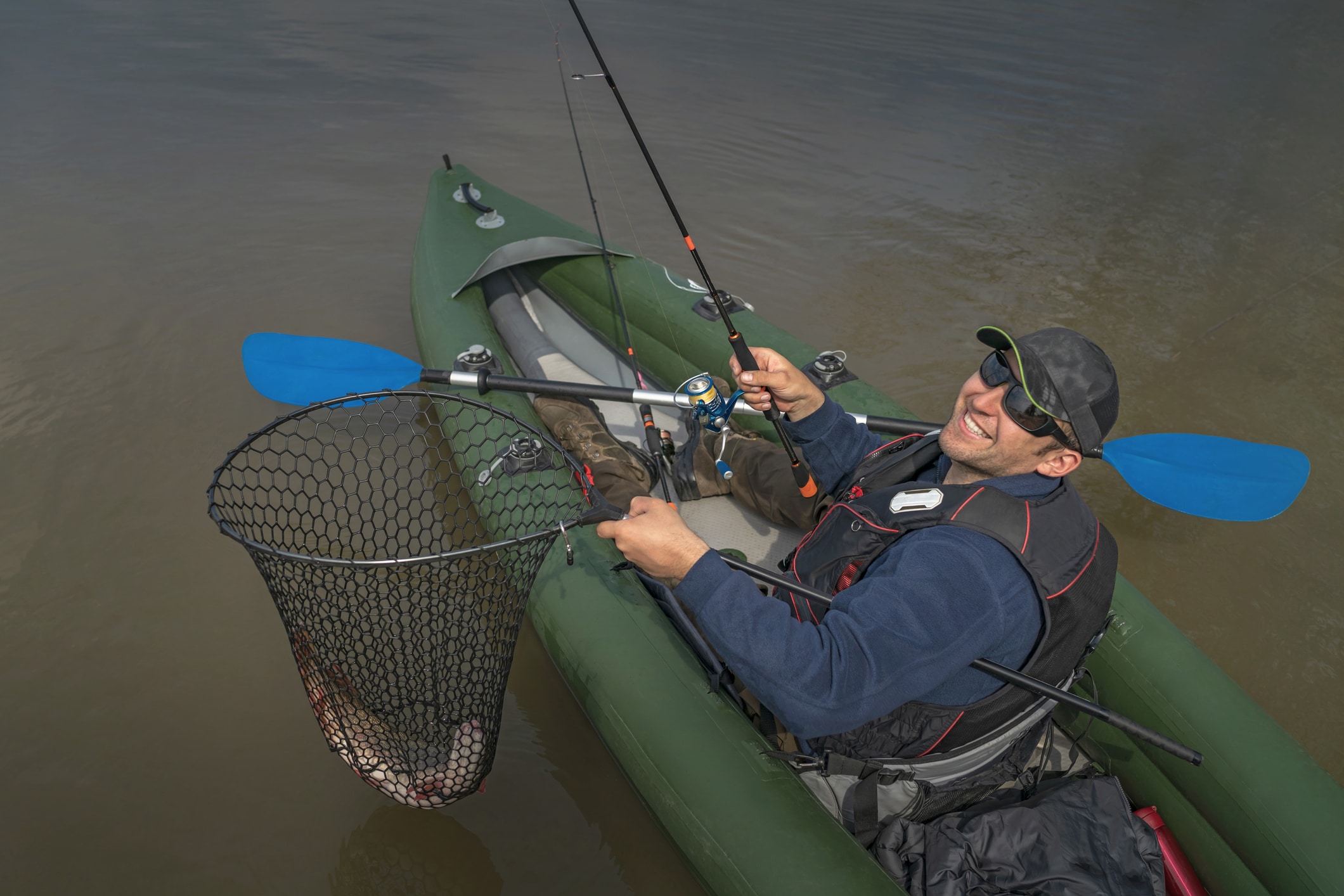
Getty Images
The reason why I recommend using a kayak for fishing heavy cover is that it allows you to access areas you couldn’t with a larger boat. You can launch a kayak into the water from just about anywhere and as long as you have waders or even boots, you don’t have to worry about getting wet.
Best Lures for Flooded Water
Let’s talk about lures. Everyone has their favorite presentation that they like to throw regardless of the situation, but when you’re fishing heavy cover, you need to think a bit differently about what you use.
Fishing heavy cover requires a weedless presentation nine times out of ten. That leaves you with a few options. Here’s what I use:
Hollow Body Frogs
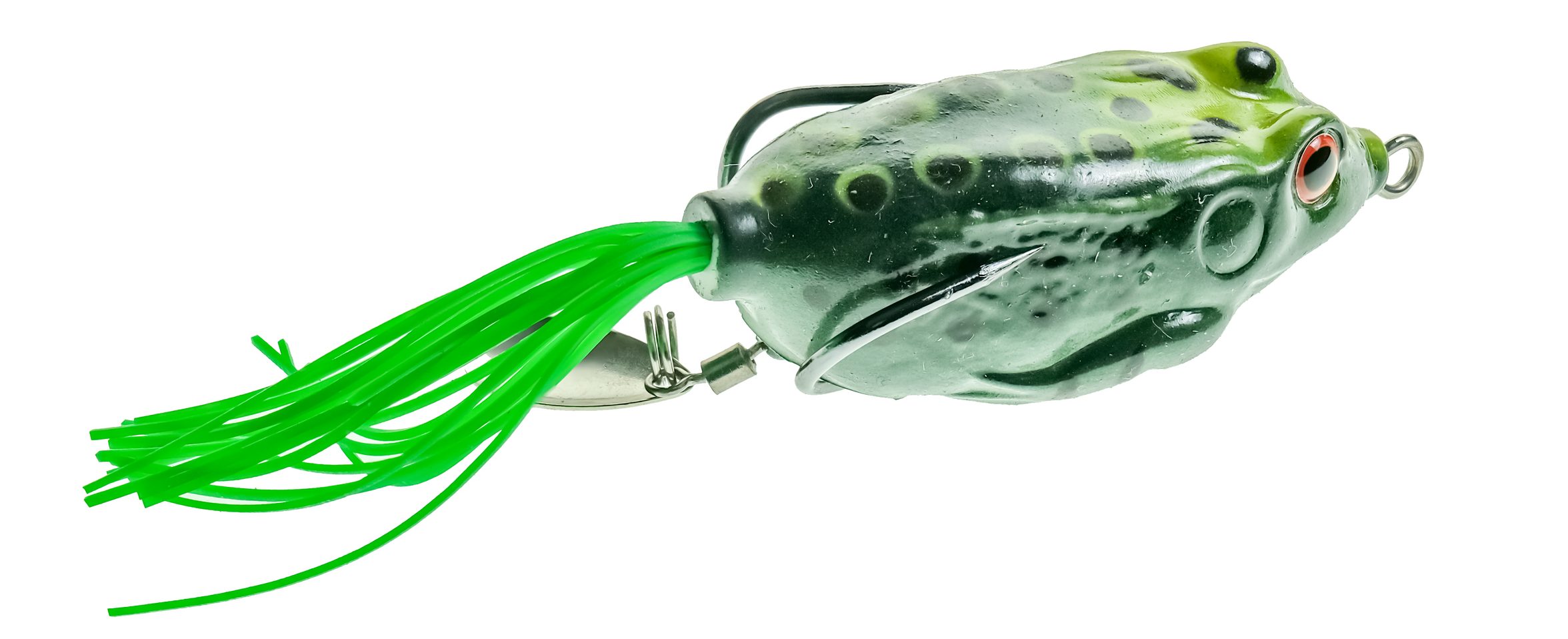
Frog Lure. Getty Images
Frogs are great for weedy waters because you don’t have to work them much. They basically all have weedless presentations and they coast across the top of the water, which makes them perfect for working through mats and weed beds.
The main downside of using frogs is that you need a hard strike to set the hook because of the weedless nature of the presentation. The hooks are well covered so you need the bass to commit otherwise you’ll never set the hook.
Senko Worms
Senko worms are one of my favorite presentations in nearly any setting but especially in dense cover. Rigging a senko Texas-style is one of the simplest and most effective ways to fish flooded cover.
Make sure you know how to rig the worm properly for fishing heavy vegetation. Otherwise you’ll be losing lures and getting hung up too frequently.
Poppers
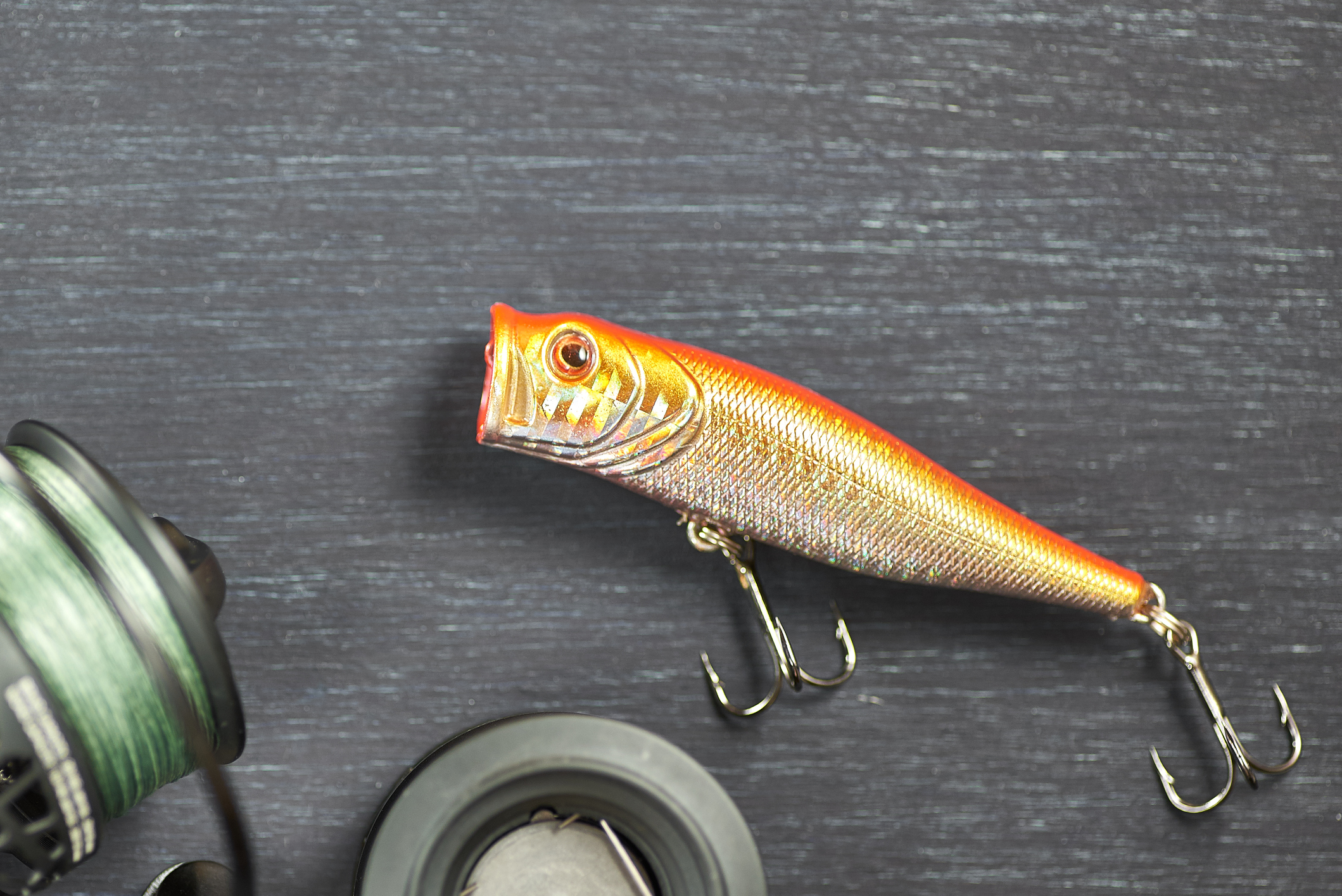
Getty Image
Topwater poppers are another great option because of the noise factor here. These make a big splash when they hit the water and they make a chugging sound as you retrieve them. Even if the bass can’t see the lure, they’ll be able to hear it. You have a good chance of getting them to strike as soon as the lure hits the water.
Go with something that appears natural with some red to imitate an injured baitfish. This increases the chance of them striking it even if they’re not actively feeding.
Seeing Through the Murk
Do you want to know the keys to fishing for bass in heavy cover?
- Scent
- Vibrant presentation
- Weedless rig
- Stealth
If you can combine those four things, you’ll have plenty of success. This, in turn, will increase your chances of pulling in a big one. Remember, bass are hiding in less-fished locations that few people can access. If you can find a way to safely get in there and wet a line, you’re in for a real treat. Good luck out there!

